A Wining Cost Estimate
That Helps You To Win More Plumbing Construction Projects
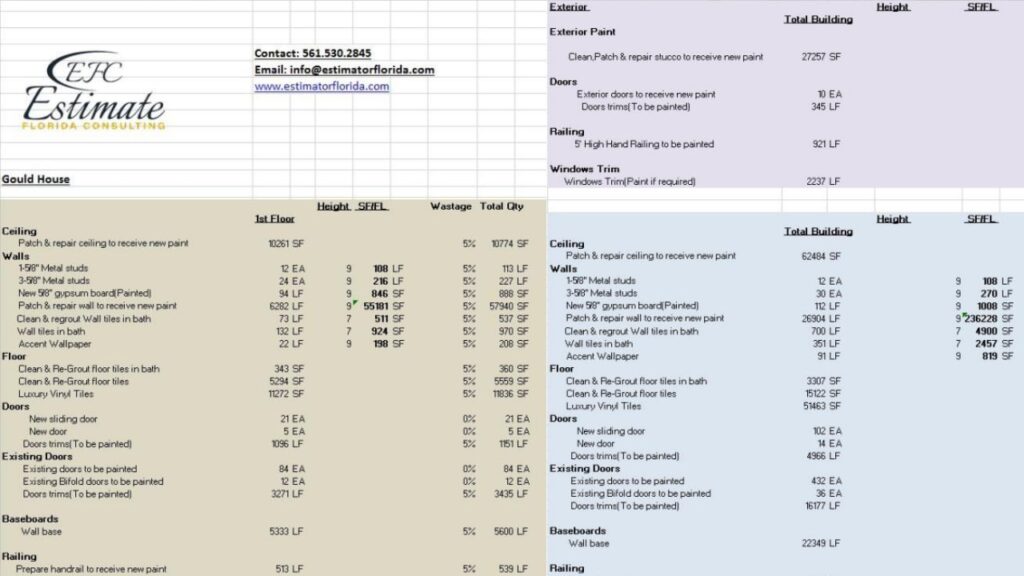
Plumbing repairs and replacements are essential to any homeowner. To comprehend them, one has to understand the elements like water supply systems, drainage systems, and water heaters.
Acknowledge the processes involved. Inspect the issue, identify the source of the problem, troubleshoot potential hitches, fix or replace parts, test, and review before finalizing.
Other details to consider include material costs and water pressure, which influence pricing and timelines respectively.
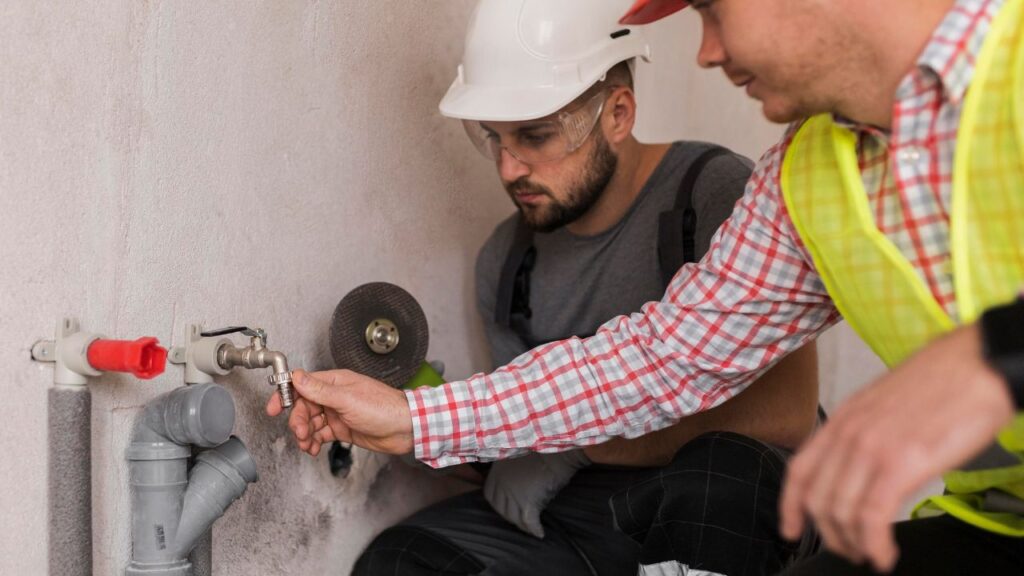
For example, a homeowner noticed rust-colored water coming out of taps and called a plumber. After inspection, it became clear that corroding pipes from older underground infrastructure were causing a leakage. The plumber replaced these with modern PVC piping technologies, preventing the issue permanently.
Rather than cry over a leaky faucet, call a plumber!
To help you estimate the price of plumbing repairs and replacements, let’s delve into common plumbing issues like leaky faucets, clogged drains, running toilets, low water pressure, and broken pipes. By understanding the problems that can occur in your plumbing system, you can get a better idea of the cost of repair or replacement, and how to prevent future issues.

Drip, drip… That’s the sound of a faucet that can lead to water wastage, and, thus, a higher water bill. The most typical reason for a leak is worn-out rubber washers, which need speedy replacement. It could also be due to corroded valves or loose O-rings. Repairing a leaky faucet is necessary to prevent extra financial losses.
To fix the issue, turn off the water supply. Carefully unscrew the affected part of the faucet. Replace the broken washer or valve with a new one. Put the components back together. Then, switch on the water supply again. If you’re uncertain, seek professional help.
Don’t ignore minor leaks. Handle them quickly by either calling for help or trying DIY repairs with proper instructions. An old man neglected his bathroom faucet until it caused serious damage. Don’t let this happen to you. Check your faucets regularly and fix any leaks immediately. Ah, if only our emotions could clog drains instead of hair!
Clogged pipes are common in plumbing. Interruption of water flow can be damaging to your plumbing system. Here is what to do:
Never ignore slow drains, as they could mean clogging is on its way. Also, a faulty garbage disposal can lead to blockages, so make sure it’s running correctly.
In the end, if you keep having clogs, there could be more serious problems deeper in the pipes. In this case, it’s best to get professional help.
Pro Tip: Cleaning and maintaining your plumbing system can stop most problems from happening. If your toilet is running, it’s not exercising – it’s just wasting water and money.
Toilets that keep flowing even after being flushed can waste gallons of water. High utility bills may result! A faulty flapper or fill valve is often the cause.
The flapper, which controls the flow of water, may get worn out or be misaligned. The fill valve, which regulates the water tank level, can also get clogged or leaky. Both issues can lead to water flowing into the bowl continuously.
A faulty overflow pipe or tube can also be the culprit of a running toilet. If it fails to divert extra water to the tank, it can cause noisy and wasteful flushing cycles.
If you notice a running toilet long after flushing or hear hissing sounds from the tank, get a pro plumber to diagnose and fix the issue.
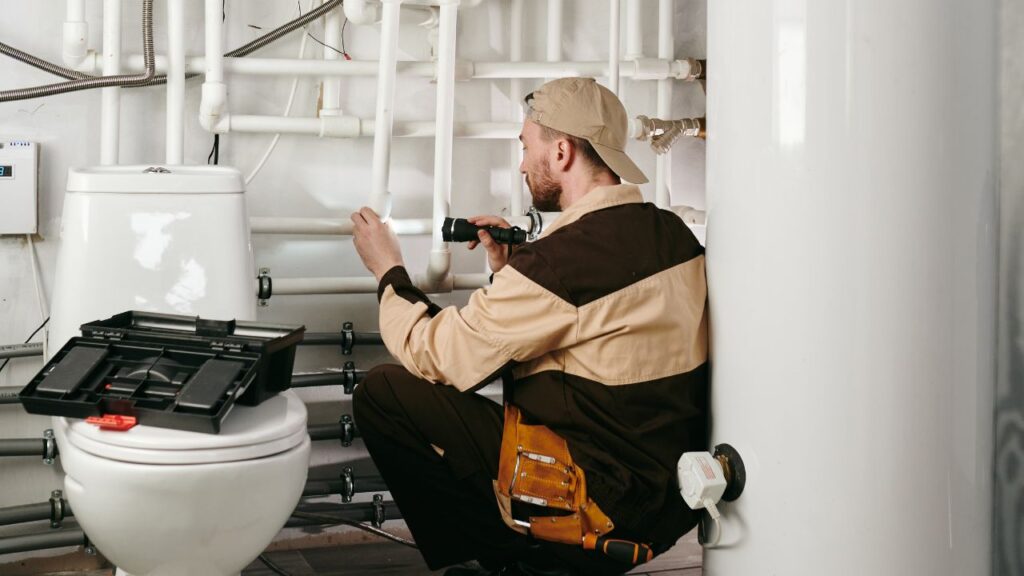
Pro Tip: Check for leaks and secure all parts to avoid water and money loss. Low water pressure is like having a leaking straw to shower with.
Maximize your plumbing construction business’s potential with our competitive financing options

Water flow is vital for plumbing systems. If it slows or reduces, disaster can occur. This decrease in water movement is known as “Reduced Water Pressure.” Reasons for this can be various: mineral and sediment buildup, faulty valves/regulators, high demand from multiple users, or even small leaks. Issues with the pipeline infrastructure can cause low pressure and contaminate the system.
To detect low water pressure in your home, easy steps can help. Check for open taps, clogged pipe sections, and visible leaks. In an apartment block, a major fire caused low water pressure. Firefighters needed more supply to put out flames and evacuate people, but the building’s draught was not enough. This led to flooding and damaged parts.
Bottom line: when it comes to broken pipes, it’s sink or swim—and no one wants to swim in their basement!
Pipes can be a nightmare for homeowners if they split or rupture. This is generally caused by freezing temps, age, or external issues such as soil erosion and tree roots. This can lead to low water pressure, bad smells, discolored water, and dampness around the structure. You must identify and repair them quickly to prevent more damage.
The severity of the issue depends on its location, size, and other factors that caused the crack. For example, if it’s in a building slab, expensive repairs may be needed as concrete removal might be required. Trenchless technology is becoming popular for this type of repair as it doesn’t need much digging.
Broken pipes may also lead to water wastage and health risks from contaminated water leaking into clean sources. It is important to contact professional plumbers who know local codes and requirements for pipe repair.
A HomeServe USA survey shows that homeowners spend an average of $5000 per year on plumbing repairs due to ageing pipes. If only we could fix plumbing with duct tape and a prayer, but the real factors involved are more complex.
To estimate the cost of plumbing repairs and replacements, you need to consider various factors affecting the overall expense. In order to understand these factors, delve into this section on “Factors Affecting Plumbing Repair and Replacement Costs” that covers sub-sections like “Type of Issue”, “Severity of Issue”, “Age and Material of Plumbing System”, “Accessibility of Pipes”, and “Location”.

The expense of plumbing repairs and replacements depends on the type of issue. Here are key factors to consider:
It is important to identify the issue first. This can help save money. Regular maintenance and check-ups can also help prevent plumbing problems.
One homeowner noticed their water bill was higher, even though they were using less water and saving energy. A plumber found hidden pipe leaks. By finding the problem early, they saved a lot of money. So why not go wild and turn your home into an indoor swimming pool?
The issue’s magnitude has a big impact on plumbing repair and replacement costs. Factors like the damage’s extent, how long it’s been going on, and how far it’s spread all contribute to the repair cost. If it’s only been going on for a short while, the repair cost will likely be low. A small leak might not seem like much at first, but if left alone, it could grow into a bigger problem. Keeping your plumbing in good shape with regular maintenance can help stop small issues from becoming bigger.
The materials used for plumbing also play a vital role in repair and replacement costs. The quality and durability of pipes or fixtures will affect how long they last before needing repairs or replacements. Cheaper materials tend to need more frequent replacements, adding up the cost.
It’s also important to make sure you get a professional plumber with plenty of experience to work on your plumbing problems. An inexperienced person might not diagnose the issue correctly, leading to extra, unnecessary expenses.

Today, copper is used for water pipes around the world instead of lead, because copper does not corrode or rust as quickly. This is done to protect people from lead poisoning. So, your plumbing may be outdated, but at least it’s not as old and leaky as your ex’s excuses!
Age and materials of plumbing systems greatly influence their repair and replacement costs. Let’s take a look at the factors that determine these expenses.
A table can help understand the effect of plumbing system age and material on repair and replacement costs. Check out the average cost of fixing or replacing different kinds of pipes according to their material and age:
Plumbing Material | Age (years) | Average Cost (USD) |
|---|---|---|
Copper | 1-25 | $200-$1,000 |
PEX | 1-40 | $100-$800 |
Galvanized steel | 20+ | $1,000-$2,500 |
PVC/CPVC | 50+ | $500-$3,000 |
Plumbing repair and replacement costs depend on factors such as location, accessibility, damage severity, labor fees, permits, etc.
Water supply pipes are generally located in walls or underground. Accessibility of access point hugely affects repair costs. In high-rise buildings, specialized tools may be required to reach the damaged pipes, leading to extra labor charges.
Copper pipes have been used since ancient times when people employed bronze for piping water. Despite its potential durability for decades or more and anti-corrosion features, it can suffer from pinhole leaks.
Don’t worry! Your pipes are not invisible to your local plumber. They can handle any issue no matter how hard it is to access them.
The accessibility of plumbing system components influences repair and replacement costs. Easily accessible pipes incur lower costs, while less accessible and very limited access will cost more. An example of this is when cabinetry blocks access to bathroom piping, leading to increased labor hours and higher costs. Accessibility, location of piping, complexity with materials, and depth and length of pipes all come into play. Repair costs may vary by location, but they’re still cheaper than buying a house in San Francisco!

When it comes to influences on plumbing repair and replacement costs, many things come into play. One is the region where the job needs to be done.
Also, look into the population density of an area. Urban areas with high density can have higher labor rates as there is more demand. It has been reported that landlords may try to convince tenants that makeshift repairs are acceptable, avoiding responsibility to maintain properties.
It’s important to know how geography affects plumbing repair costs before planning for these services. You’ll need to do some calculations and get ready to pay up!
To estimate the cost of plumbing repairs and replacements, you need to take specific steps. You start by identifying the issue, then evaluate its severity, determine the required materials, and obtain cost estimates for materials and labor. Finally, you add additional costs to get the final estimate. This section on steps to estimate plumbing repair and replacement costs, with sub-sections such as identifying the issue, evaluating severity, determining materials, obtaining cost estimates, and factoring in additional costs offers a step-by-step guide to help you through the process.
Diagnosing plumbing issues is key to repairing or replacing them. Check for water leaks, running water and low pressure in the taps. Look for signs like damp patches, mold growth or too much moisture near pipes or fixtures. This will help identify clogged drains, damaged pipes or faulty fittings. Estimate the costs after assessing the severity and causes.
Replacing the system may be better than just repairing it. Age of the system, budget and materials used all affect this decision. Talk to plumbing professionals for cost-saving alternatives. A family once saved money by listening to a plumber’s advice. Remember, a leaky faucet may lead to a flooded basement with surprising discoveries!
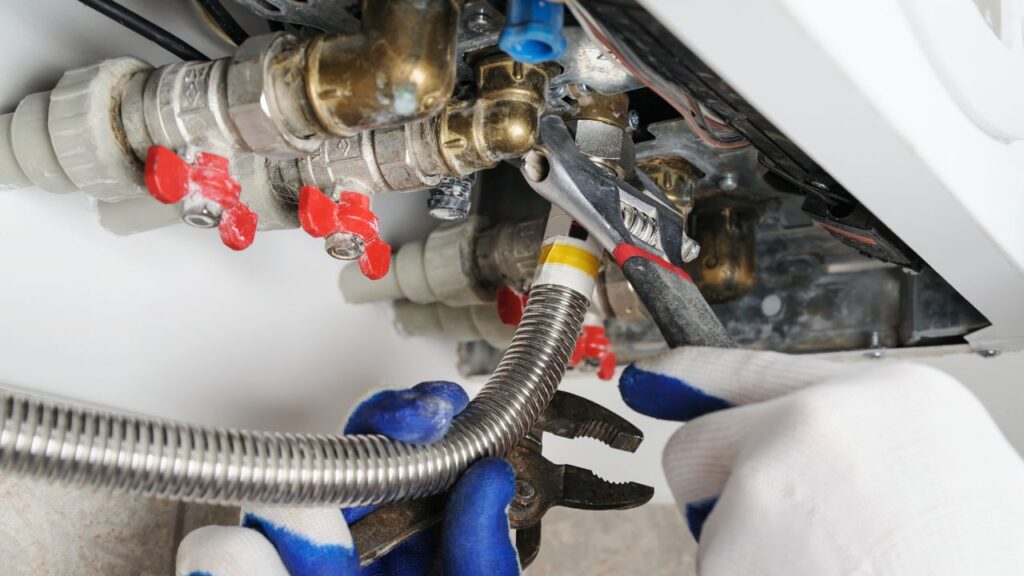
Analyzing the gravity of a plumbing issue is key when estimating repair and replacement costs. Assessing the severity can help determine an approx. cost.
To evaluate the severity, certain factors should be considered. E.g.: Age and condition of pipes and fixtures, type of issue (e.g. burst pipes, leaks, clogs, blockages), location/accessibility, water damage. Note: Every situation is unique, so these factors aren’t exhaustive.
Additionally, don’t overlook the economic implications of ignoring repairs. In most cases, avoiding repairs increases costs long-term.
Pro Tip: Be proactive in evaluating issues, as prevention is better than cure! Also, don’t forget to stock up on wrenches and spare parts. Estimating materials for plumbing repair is no easy feat.

Obtaining material cost estimates is key to helping ensure accurate plumbing repair and replacement costs estimation. Here are 6 points to consider when identifying what’s needed:
It’s also important to buy high-quality materials for efficiency, safety and longevity. Get advice from professional plumbers or online resources.
Comprehending what materials you need can help avoid issues such as underestimating costs or buying too much. Ignoring this could lead to poor workmanship, low-grade product quality and repeat repairs.
During WW2 there was a copper shortage, prompting experts to create plastic pipes. To avoid a nasty surprise, do your research and get cost estimates before the repair.
To estimate plumbing supply costs, consider: type of materials, size and scope of repairs, and any extra costs. Here’s a table with estimated costs:
Materials | Estimated Costs |
|---|---|
PVC Pipes | $0.40 – $2.00 per foot |
Copper Pipes | $2.50 – $10.00 per foot |
Galvanized Steel Pipes | $2.50 – $5.00 per foot |
Toilets | $130 – $900 each |
Sinks | $50 – $750 each |
Faucets | $30 – $500 each |
Plus, labor charges, transport charges, and taxes may add to the cost. These figures are just an estimate and could vary depending on location and supplier prices. Homeadvisor.com states that “the average cost nationally can range from $45 per hour for repair work or replacement services”. To get the best cost estimates for labor, be ready to negotiate!
Getting Cost Estimates for Labor is key for figuring out Plumbing Repair and Replacement Costs. Follow these steps:
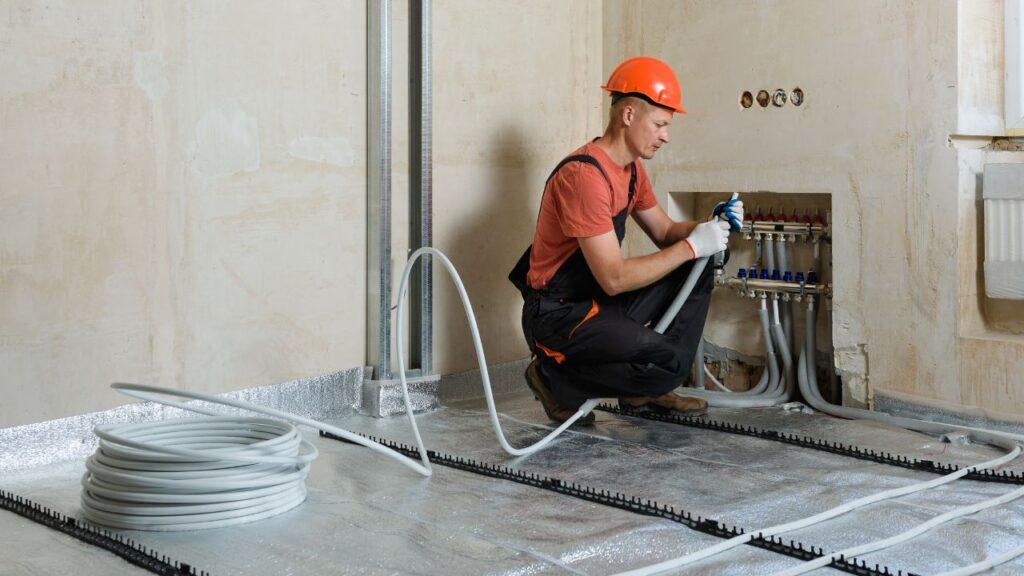
To make sure you’re getting the right cost, take details like additional fees into account, such as emergency fees or service fees, so that you have the full picture.
Pro Tip: Talk to the contractor about every aspect of the project to stay away from surprises during repairs or replacements. To add creativity to your plumbing repair bill, just add in unexpected fees like the ‘emergency toilet unclogging fee‘ or the classic ‘guessing game hourly rate‘.
It’s essential to consider extra expenses when calculating plumbing repair/replacement costs. These additional costs can greatly affect the final cost.
Costs can differ for contractors and locations. Look around for different quotes before engaging a service. And don’t forget about these extra charges – or you’ll end up with a nasty surprise. A plumber’s estimate is only their opinion ’til you see the bill.
Accurately estimating plumbing repair and replacement costs takes a comprehensive approach that meets individual needs. To do it right, research and an understanding of plumbing mechanics are key. Location, labor costs, material expenses, and professional experience all have an impact on the estimate. It’s important to use a step-by-step guide to get an accurate picture.
Scope of work, complexity, urgency, and location all affect the price. Homeowners should consider hidden costs and potential issues too. Professional plumbers with experience in estimating help minimize discrepancies.
External factors like market fluctuations, materials shortages, and labor constraints can affect pricing. To make an accurate estimation, using reliable sources like the National Plumbing Code and Uniform Plumbing Code are essential. Analyzing these factors helps ensure precise costs for future reference.
A recent survey showed that 70% of customers who accurately estimated their plumbing repairs were satisfied, compared to only 30% who didn’t. This highlights the importance of using reliable estimation methods to avoid unexpected expenses.
There are various factors that affect the cost of plumbing repairs and replacements. These include the type of repair/replacement needed, the severity of the problem, the location of the repair/replacement, and the complexity of the job.
The decision to repair or replace your plumbing system depends on the severity of the problem and the overall condition of your system. Generally, if the repair cost exceeds half the cost of replacement or if your system is more than 10-15 years old, it’s usually more cost-effective to replace the system.
Yes, you can estimate the cost of plumbing repairs and replacements on your own. However, it’s recommended to seek professional help to avoid any potential mistakes or miscalculations.
You can find a reliable plumber for your plumbing repairs and replacements by asking for recommendations from family and friends, checking online reviews and ratings, and verifying their license and experience.
During the plumbing repair or replacement process, you can expect the plumber to first diagnose the problem, provide you with an estimate, and then proceed with the repair or replacement. The process may involve shutting off water and gas supply, removing damaged parts, installing new parts and testing the system for leaks and functionality.
Yes, most reputable plumbers provide warranties and guarantees for their plumbing repairs and replacements. It’s important to ask for warranty and guarantee details before hiring a plumber to ensure that you are covered in case of any future issues or concerns.
Here I am going to share some steps to get your plumbing construction cost estimate report.
You can send us your plan on info@estimatorflorida.com
Before starting your project, we send you a quote for your service. That quote will have detailed information about your project. Here you will get information about the size, difficulty, complexity and bid date when determining pricing.
We do plumbing construction cost estimating and prepare a detailed report for your project. At last, you finalize the report and finish the project.
561-530-2845
info@estimatorflorida.com
Address
5245 Wiles Rd Apt 3-102 St. Pete Beach, FL 33073 United States
561-530-2845
info@estimatorflorida.com
Address
5245 Wiles Rd Apt 3-102 St. Pete Beach, FL 33073 United States
All copyright © Reserved | Designed By V Marketing Media | Disclaimer
IMPORTANT: Make sure the email and cell phone number you enter are correct. We will email and text you a link to get started.
By clicking “I Agree” above you give Estimate Florida Consultin express written consent to deliver or cause to be delivered calls and messages to you by email, telephone, pre-recorded message, autodialer, and text. Message and data rates may apply. You are able to opt-out at any time. You can text STOP to cancel future text messages.